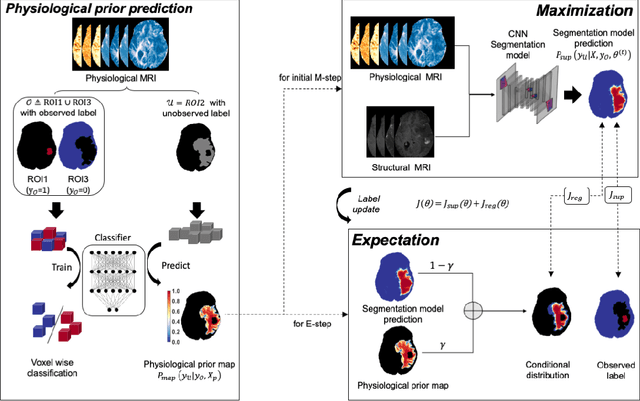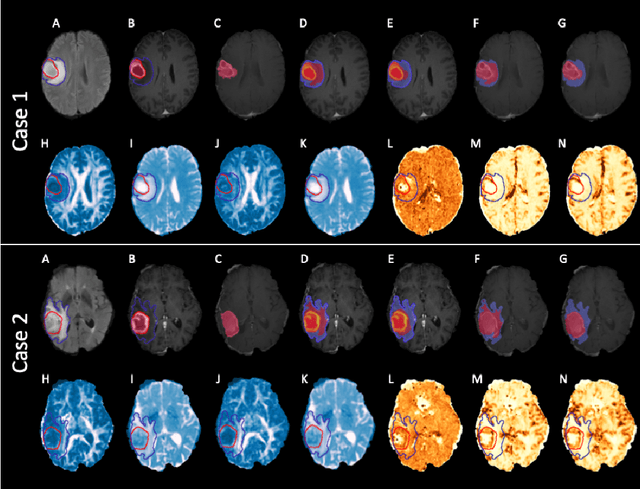Expectation-Maximization Regularized Deep Learning for Weakly Supervised Tumor Segmentation for Glioblastoma
Paper and Code
Jan 22, 2021



We present an Expectation-Maximization (EM) Regularized Deep Learning (EMReDL) model for the weakly supervised tumor segmentation. The proposed framework was tailored to glioblastoma, a type of malignant tumor characterized by its diffuse infiltration into the surrounding brain tissue, which poses significant challenge to treatment target and tumor burden estimation based on conventional structural MRI. Although physiological MRI can provide more specific information regarding tumor infiltration, the relatively low resolution hinders a precise full annotation. This has motivated us to develop a weakly supervised deep learning solution that exploits the partial labelled tumor regions. EMReDL contains two components: a physiological prior prediction model and EM-regularized segmentation model. The physiological prior prediction model exploits the physiological MRI by training a classifier to generate a physiological prior map. This map was passed to the segmentation model for regularization using the EM algorithm. We evaluated the model on a glioblastoma dataset with the available pre-operative multiparametric MRI and recurrence MRI. EMReDL was shown to effectively segment the infiltrated tumor from the partially labelled region of potential infiltration. The segmented core and infiltrated tumor showed high consistency with the tumor burden labelled by experts. The performance comparison showed that EMReDL achieved higher accuracy than published state-of-the-art models. On MR spectroscopy, the segmented region showed more aggressive features than other partial labelled region. The proposed model can be generalized to other segmentation tasks with partial labels, with the CNN architecture flexible in the framework.
 Add to Chrome
Add to Chrome Add to Firefox
Add to Firefox Add to Edge
Add to Edge